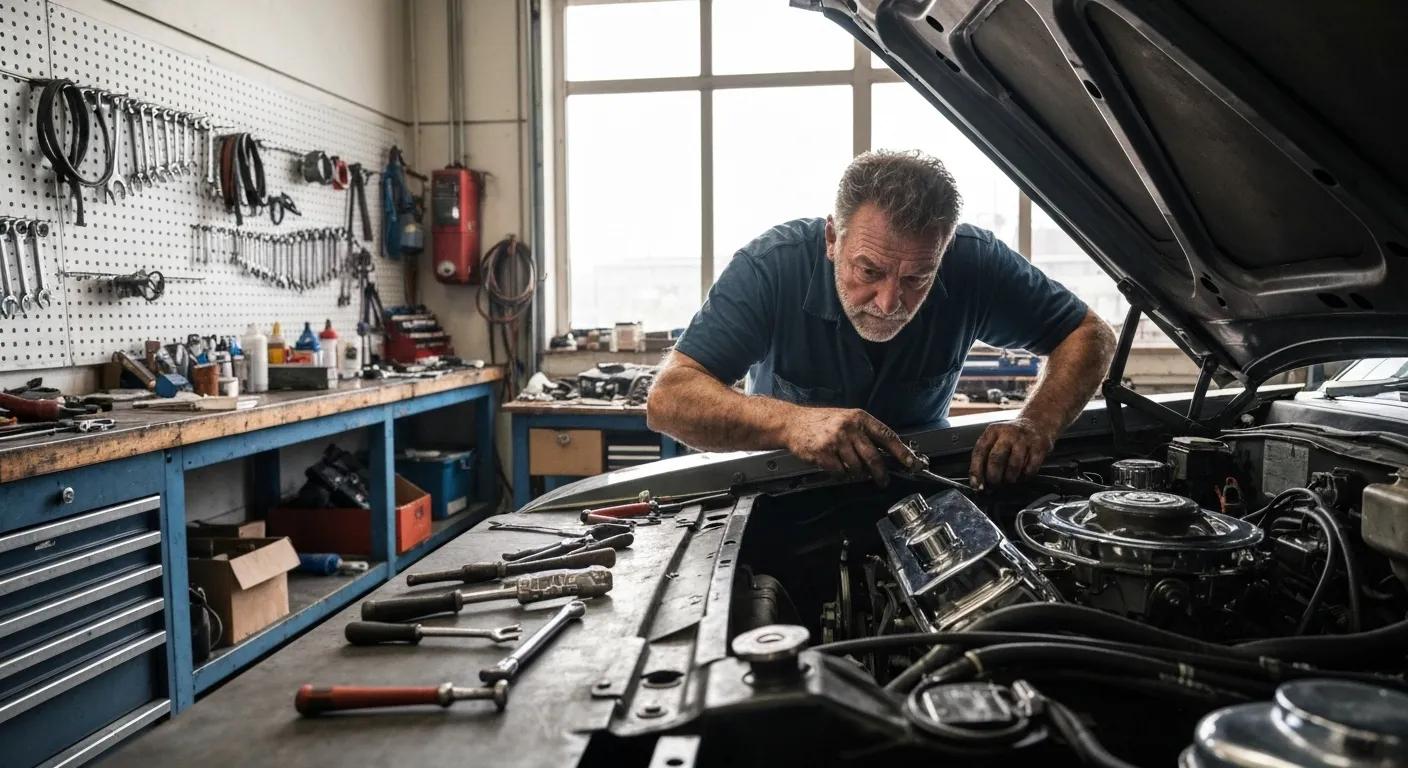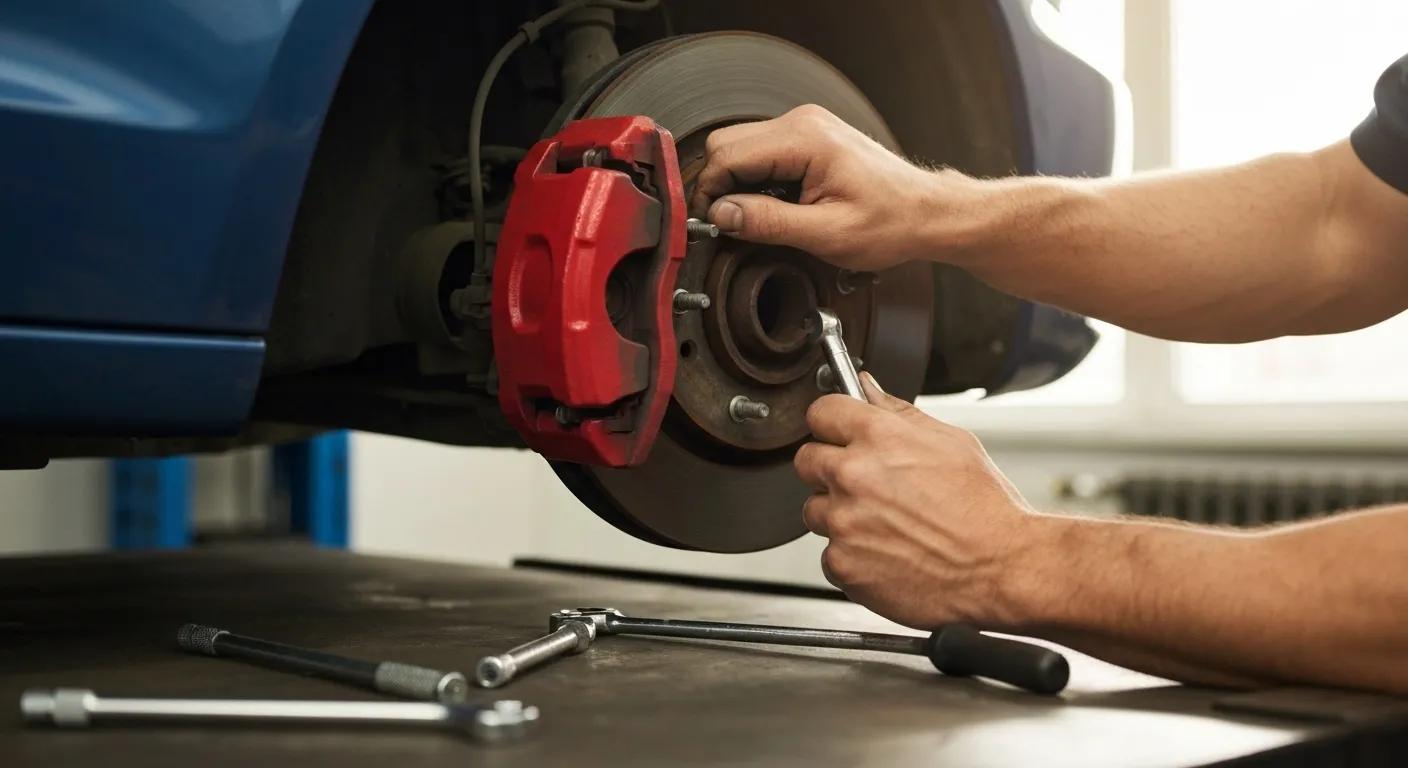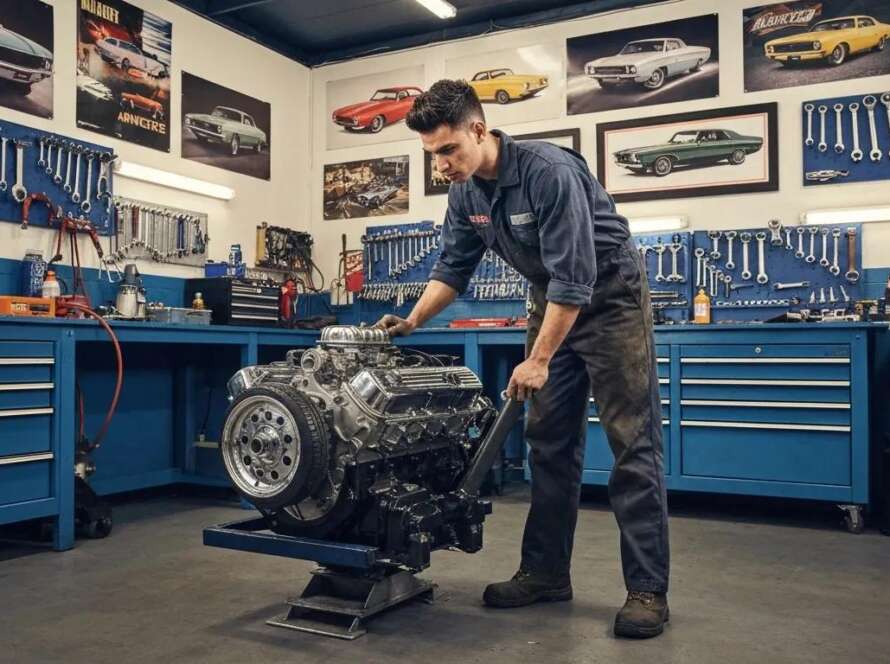
Understanding the Key Factors That Affect Auto Repair Costs at Your Local Shop
When your vehicle needs service, the final bill reflects more than just a mechanic’s time—it embodies labor rates, part quality, diagnostic work and shop overhead all converging into one number. In this exploration of what factors influence the cost of auto repair services at your shop, you’ll gain clarity on the main components of your repair bill, the influence of labor, parts and diagnostic fees, plus how vehicle specifics, location, coverage and technology shape expenses. We’ll also share proactive strategies for managing repair costs and highlight how transparent pricing, ASE-certified technicians and detailed estimates position a local shop as your trusted partner.
This guide unfolds in ten targeted sections:
- Main cost components
- Labor cost dynamics
- Parts pricing and types
- Diagnostic fees explained
- Vehicle make, model and age influences
- Geographic price variations
- Warranty & insurance impact
- Modern automotive technology drivers
- Proactive cost-reduction steps
- Conclusion and action steps
What Are the Main Components of Auto Repair Costs?
Auto repair costs consist of three core elements—labor, parts and diagnostic fees—that together determine your final invoice. Labor covers technician time and shop overhead, parts reflect the quality and source of components, and diagnostic fees account for the equipment and expertise needed to identify issues. For example, replacing brake pads requires both the cost of the parts themselves and the hours a certified mechanic spends on installation plus scanning and inspection.
How Do Labor, Parts, and Diagnostic Fees Contribute to Your Repair Bill?
Labor cost is the time your technician spends fixing your car, parts cost is the replacement component expense, and diagnostic fee covers troubleshooting with specialized tools. This tripartite model ensures each activity—inspection, replacement and repair—is compensated fairly. In practice, a brake-pad replacement might entail: two hours of labor at an hourly rate, brake pad parts pricing, and a one-time diagnostic scan fee to confirm pad wear and rotor condition.
Bridging diagnostic clarity into pricing transparency leads us to the value of clear cost itemization.
Why Is Transparent Pricing Important for Auto Repair Services?
Transparent pricing defines each service component—labor, parts, diagnostics—with a clear price breakdown. When a shop provides detailed estimates showing labor hours, part costs and diagnostic fees, customers understand what they pay for and feel confident in the value received. This openness builds trust and aligns expectations, paving the way for accurate comparisons and informed decisions on repairs.
Transparency in cost components establishes a solid foundation for examining how labor rates themselves are set.
How Do Labor Costs Influence Auto Repair Prices?

Labor cost represents technician time and technician expertise, directly shaping the service portion of your bill. It is calculated through hourly rates or flat-rate systems, both reflecting technician wages, shop overhead and equipment investment. Accurate labor pricing ensures that certified professionals maintain quality standards while covering business expenses.
What Is the Average Mechanic Labor Rate and How Is It Calculated?
Average mechanic labor rates typically range between $75 and $150 per hour, depending on shop location, technician certification and overhead. Shops calculate rates by summing technician wages, benefits and shop operating costs—rent, utilities, equipment—and dividing by billable hours. A flat-rate model assigns a standardized time estimate per service, while an hourly model invoices actual time spent.
Understanding this calculation clarifies why technician skill commands premium fees.
How Does Technician Skill and ASE Certification Affect Labor Costs?
Technician skill level and ASE certification enhance repair quality and efficiency, but they also raise labor rates. ASE-certified mechanics deliver precise diagnostics and reliable service, which reduces rework and long-term costs. As a result, shops employing certified professionals may charge higher hourly rates—typically 10–20% above non-certified counterparts—to reflect advanced expertise.
What Role Does Shop Overhead Play in Labor Charges?
Shop overhead—rent, utilities, equipment maintenance—must be covered within labor rates. A shop investing in advanced diagnostic hardware, environmental disposal systems and customer amenities distributes these costs across all labor hours. Higher oversight often translates into higher per-hour rates, ensuring the shop remains profitable while providing comprehensive services.
With labor dynamics clear, we turn to another key driver: parts pricing and selection.
How Do Parts Pricing and Types Affect Auto Repair Costs?
Parts pricing hinges on the source—OEM, aftermarket or remanufactured—and availability. Each parts category carries a distinct cost-quality profile that directly influences repair expenses, service reliability and warranty coverage.
Before comparing parts, we present a concise table for typical cost and quality attributes.
| Part Type | Typical Cost Range | Quality Level | Warranty Coverage |
|---|---|---|---|
| OEM (Manufacturer) | $150–$300 | High | Manufacturer-backed |
| Aftermarket | $80–$200 | Moderate to High | Shop or third-party |
| Remanufactured | $60–$150 | Moderate | Limited shop guarantee |
This comparison of OEM, aftermarket and remanufactured parts reveals how selecting a part type affects both your upfront expense and long-term reliability.
What Are the Differences Between OEM, Aftermarket, and Remanufactured Parts?
OEM parts are produced by the vehicle manufacturer and offer exact fit and performance but at a premium price. Aftermarket parts come from independent suppliers, often offering cost savings with acceptable quality variations. Remanufactured components—rebuilt to factory specs—provide a middle ground, balancing lower cost with moderate warranty coverage. Choosing between these options requires weighing immediate savings against long-term value.
How Do Supply Chain Issues Impact Parts Availability and Pricing?
Global supply chain disruptions, tariffs and manufacturer recalls can delay part delivery and inflate prices. Limited availability of electronic modules or specialty components may force shops to source alternatives at higher markups. This volatility underscores the importance of working with a shop that maintains diverse supplier relationships to secure timely and cost-effective parts.
When Are Used or Salvage Parts a Cost-Effective Option?
Used or salvage parts can reduce expenses by 30–60% when sourced and inspected properly. They are ideal for non-safety-critical components—body panels or trim—where performance risk is low. However, shops must vet used parts for condition and compatibility to avoid repeat repairs, ensuring savings do not compromise reliability.
Having dissected parts pricing, the next expense layer is diagnostic fees and their justification.
What Are Diagnostic Fees and Why Are They Charged?
Diagnostic fees cover the specialized equipment and technician expertise required to identify complex vehicle issues. These charges ensure shops allocate resources to accurate fault detection, preventing unnecessary repairs and bolstering customer confidence in service recommendations.
What Is the Purpose of a Diagnostic Fee in Auto Repairs?
A diagnostic fee compensates for the use of scan tools, software subscriptions and technician analysis time needed to pinpoint faults. By charging this fee, shops invest in high-end diagnostic technology and training, enabling faster turnaround and more precise repairs. The outcome is reduced trial-and-error fixes and a targeted approach to component replacement.
How Do Advanced Diagnostic Tools and Technology Affect These Fees?
Modern vehicles rely on electronic control units (ECUs) and networked sensors. Advanced diagnostic scanners and OEM-level software demand significant investment. Shops that maintain this technology pass on part of the expense through diagnostic fees, reflecting the accuracy and speed these tools provide in identifying root causes.
When Should You Expect to Pay a Diagnostic Fee?
Diagnostic fees are typically charged when a check engine light appears, after collision damage, or when intermittent problems emerge. Some shops waive the fee upon authorizing the recommended repairs, applying it as a credit toward labor and parts. Understanding fee policies upfront prevents surprises and lets you budget accurately.
With diagnostics covered, we next examine how your specific vehicle influences repair pricing.
How Does Your Vehicle’s Make, Model, and Age Affect Repair Costs?
Vehicle characteristics—luxury status, technological complexity and age—shape repair labor, part prices and diagnostic requirements. A high-end German sedan commands premium parts and specialty skill, while an older domestic model may need frequent maintenance but simpler components.
Why Do Luxury and Advanced Technology Vehicles Cost More to Repair?
Luxury brands incorporate precision engineering, proprietary electronics and premium materials that raise part costs and labor skill requirements. A collision on a vehicle equipped with adaptive cruise control or lane-keep assist often entails camera calibration and specialized tooling, inflating both diagnostic and repair fees.
How Does Vehicle Age Influence Repair Frequency and Expense?
Older vehicles typically experience wear-related failures—suspension bushing deterioration, rusted brake lines or seal leaks—requiring more frequent repairs. Although parts may be less complex, labor time increases for disassembly and removal of corroded components. Conversely, new models may need fewer visits but cost more per service due to advanced systems.
Impact of Vehicle Age on Repair Costs
Older vehicles tend to require more frequent repairs due to wear and tear, which can increase overall maintenance expenses. Components like suspension bushings and brake lines may deteriorate over time, leading to more frequent service needs [2].
Consumer Reports, “Understanding Car Repair Costs” (2023)
What Repair Types Are More Expensive for Certain Vehicle Models?
Some models use uncommon components—electric power steering racks, dual-mass flywheels or regenerative braking modules—that carry steep parts costs. Repairs like transmission overhauls on high-performance vehicles can more than double the cost of equivalent services on standard sedans, reflecting both part rarity and technician expertise needed.
Having dissected vehicle factors, we turn next to how location shapes labor rates and parts prices.
How Does Geographic Location Impact Auto Repair Prices?
Location influences labor and parts costs through local market demand, competition and overhead variations. Urban centers often bear higher rent and wages, elevating service rates, while rural shops may offer lower labor rates but face limited parts availability.
Why Do Labor Rates and Parts Prices Vary by State or City?
Regional economic conditions determine average wages and real estate costs that feed into labor rates. States with higher minimum wages or unions may see technician rates above $100 per hour, whereas smaller towns may average $60–$80 per hour. Similarly, regional distribution costs and taxation can push parts prices higher in certain areas.
Labor Rate Variations
Mechanic labor rates can fluctuate significantly based on geographic location, reflecting differences in local economic conditions and overhead costs. For example, urban areas often have higher labor rates due to increased rent and wages compared to rural areas [1].
Bureau of Labor Statistics, Occupational Outlook Handbook (2024)
How Does Shop Overhead Differ in Urban vs. Rural Areas?
Urban shops incur greater rent, insurance and licensing fees, which get allocated to higher labor charges. Rural locations benefit from lower property costs but may pass on expenses through higher delivery fees for specialty parts or longer diagnostic times due to fewer nearby suppliers.
What Are Typical Regional Price Benchmarks for Common Repairs?
The following table outlines average national and regional labor rates and parts markups for benchmark services:
| Region | Labor Rate (hr) | Parts Markup (%) |
|---|---|---|
| Northeast | $100–$130 | 25–40 |
| Midwest | $75–$95 | 20–35 |
| South | $70–$90 | 18–30 |
| West Coast | $110–$140 | 30–45 |
These benchmarks reveal that coastal metros tend to charge the highest rates, while central regions offer relatively lower costs for comparable services.
Understanding regional differences guides decisions when traveling or relocating, and now we’ll explore how coverage options affect out-of-pocket costs.
How Do Warranty and Insurance Coverage Affect Your Repair Costs?
Warranty and insurance can substantially reduce what you pay at the counter. Manufacturer warranties cover specific components and labor, while extended warranties and insurance policies offset collision or comprehensive repair expenses.
What Is the Impact of Manufacturer and Extended Warranties on Repair Bills?
Manufacturer warranties include free repairs for covered components—engine, transmission or drivetrain—within a defined mileage or time period. Extended warranties from third parties often provide similar protection at an added annual fee. When in effect, these warranties can lower or eliminate part and labor charges for eligible failures.
How Does Auto Insurance Influence Collision and Comprehensive Repair Costs?
Collision and comprehensive insurance cover damage from accidents, theft or natural events, minus your deductible. Insurers negotiate parts and labor rates with approved shops, often reducing your costs. However, high deductibles or non-approved shop requirements can shift more expense back to you.
When Should You Use Warranty or Insurance to Minimize Out-of-Pocket Expenses?
Use manufacturer or extended warranties for mechanical failures within coverage terms to avoid labor and part charges. Rely on insurance policies for collision damage when repair costs exceed deductibles substantially. For minor wear-and-tear items like brake pads or filters, paying out of pocket may avoid rate hikes on your insurance premiums.
With financial safeguards addressed, modern automotive technology emerges as the next key driver in repair pricing.
What Role Does Modern Automotive Technology Play in Repair Costs?
Advanced systems like ADAS, hybrid powertrains and complex infotainment modules require specialized tools, training and calibration procedures, pushing repair costs higher than for legacy vehicles.
How Do Advanced Driver-Assistance Systems (ADAS) Increase Repair Complexity?
ADAS features—lane departure warning, adaptive cruise control, collision mitigation—depend on cameras, radar and lidar sensors. Calibrating or replacing these systems requires precision equipment, software licensing and technician certification, adding hours of diagnostic and calibration time to the repair bill.
Why Are Specialized Tools and Technician Training Necessary for Modern Vehicles?
Modern vehicles integrate networked modules and proprietary software that only manufacturer-approved scanners and training can service properly. Investing in factory-level scan tools and sending technicians through OEM training ensures accurate diagnostics and calibrations, but these costs translate into higher labor rates and fixed diagnostic fees.
How Can Digital Vehicle Inspections Improve Transparency and Cost Understanding?
Digital vehicle inspections (DVIs) use cameras and software to document real-time findings, attaching photos, videos and diagnostic codes to an online report. Customers see exactly which components need service and why, enhancing trust. This clarity reduces disputes, speeds authorization and reinforces the value behind technology-driven diagnostic fees.
Having covered technology’s role, we close with proactive steps to manage and reduce your overall repair expenses.
What Proactive Steps Can You Take to Manage and Reduce Auto Repair Costs?
Adopting preventative maintenance, obtaining detailed estimates and selecting the right repair shop are three key strategies for controlling long-term repair expenses.
How Does Preventative Maintenance Lower Long-Term Repair Expenses?
Regular services—oil changes, fluid flushes and scheduled inspections—address wear before failure, preventing costly breakdowns. A properly maintained timing belt or brake system avoids engine damage or accident-level repairs, translating into savings of up to 25% over a vehicle’s lifespan by reducing emergency service costs.
Why Is Getting Detailed Repair Estimates Essential Before Authorizing Work?
Detailed repair estimates break down labor hours, parts costs and diagnostic fees for each service. This itemization empowers you to compare quotes, question unnecessary work and budget accurately. When shops provide transparent estimates, you avoid surprise charges and can prioritize repairs based on urgency and budget.
How Can Choosing the Right Repair Shop Affect Your Overall Costs?
Selecting a shop that emphasizes transparent pricing, employs ASE-certified technicians and offers warranty assurances on parts and labor ensures you pay fair rates for quality work. A reputable local shop with detailed estimates and digital vehicle inspections minimizes unnecessary repairs, reduces repeat visits and ultimately lowers your total cost of ownership.
Building on these strategies keeps you in control of repair decisions and paves the way for reliable, cost-effective vehicle care.
Repair costs stem from a combination of labor, parts, diagnostics, vehicle complexity, location, coverage and technology. By understanding each factor and taking proactive steps—routine maintenance, clear estimates and thoughtful shop selection—you gain confidence in managing expenses. Partnering with a local shop that values transparency, certified expertise and detailed communication ensures your vehicle remains safe, reliable and affordable to maintain.




